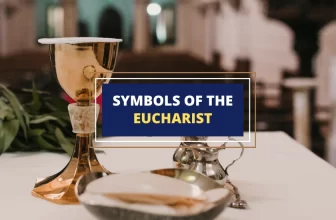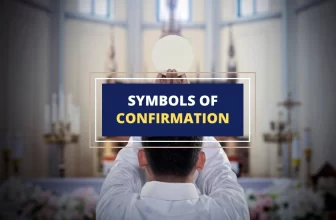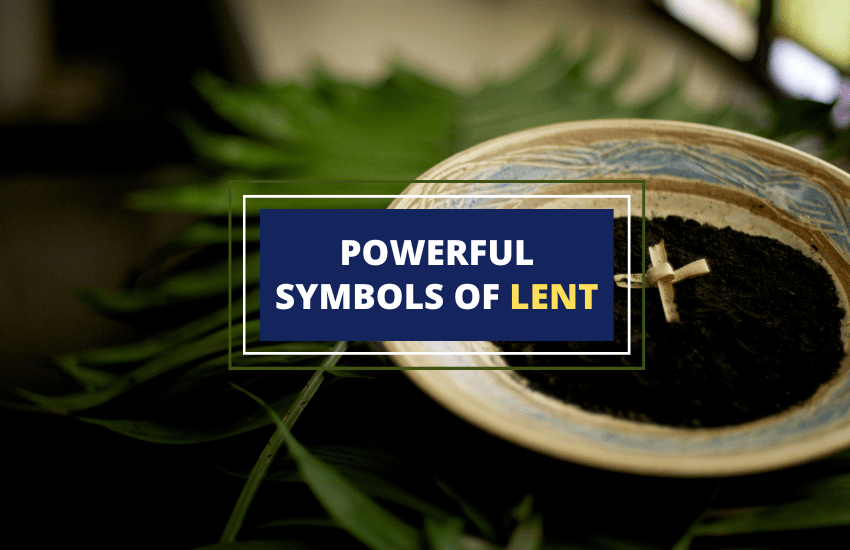
Table of Contents
Lent is a time of year that holds great importance in the Christian faith. It’s a season of sacrifice, self-reflection, and spiritual growth.
Did you know that Lent is also rich with symbolism? From the ashes used on Ash Wednesday to the palms of Palm Sunday, each symbol carries a unique meaning that adds depth and significance to the season.
Let’s explore the rich symbolism that makes Lent such a meaningful and transformative time of year. Let’s get started!
What Is the Lent Season?
Lent is a season of fasting, penance, and spiritual reflection in the Christian faith. It’s a time of year when Christians prepare for Easter celebrations, which commemorate the resurrection of Jesus Christ.
Lent begins on Ash Wednesday, which usually falls in late February or early March, and lasts for forty days (excluding Sundays), culminating in Holy Week.
History of Lent
The history of Lent can be traced back to the early church, where it was established as a time of preparation for new converts to the faith.
Over time, Lent became a season of penance and self-reflection for all Christians, as they sought to imitate the forty days that Jesus spent fasting in the wilderness before beginning his public ministry.
Today, Lent is celebrated by Christians of many denominations around the world, with each group observing the season in their own unique way.
During Lent, many Christians choose to fast or give up certain luxuries as a form of sacrifice and penance.
This may include abstaining from meat on Fridays or giving up social media, sweets, or other indulgences for the season.
Some churches also hold special services or prayer gatherings during Lent, where members can reflect on their faith and seek spiritual renewal.
8 Symbols of Lent and Their Meanings
In the Christian calendar, Lent is a period of solemn reflection and preparation leading up to Easter.
Symbols play a significant role in this season, each carrying a unique meaning that enhances the overall message of Lent.
1. Ashes

Ash Wednesday, which marks the beginning of Lent, is named after the practice of marking one’s forehead with ashes shaped like a cross.
This symbolizes repentance and humility and the temporary nature of human life. In ancient times, ashes served as a symbol of mourning and repentance.
In some Christian traditions, the ashes used on Ash Wednesday are made by burning the palm fronds from the previous year’s Palm Sunday.
It further emphasizes the cycle of life, death, and rebirth, as the same palm branches that were used to celebrate Jesus’ entry into Jerusalem, are later burned and used to remind us of mortality and the need for repentance.
The ashes are a powerful reminder of human frailty and serve as a call to turn our hearts back to God and seek his mercy and forgiveness. The simple symbol of a cross made from ashes carries a profound message of hope and redemption and serves as a powerful reminder of the transformative power of Lent.
2. Purple

Purple is the traditional color of Lent and represents penance, sorrow, and royalty. During the season of Lent, priests and altar cloths are draped in purple as a sign of mourning for Jesus’ death and a reminder of the sacrifices he made.
Color purple also symbolizes the royalty of Jesus as the King of Kings.
In addition, purple also has a deeper symbolic meaning in Lent. The use of purple during Lent dates back to ancient times when purple was a rare and expensive dye reserved for royalty and the wealthy.
The use of this rich, regal color during Lent thus serves as a reminder of Jesus’ true kingship and his triumph over sin and death.
Purple has been associated with Lent since the early days of the church. According to tradition, the Roman Emperor Constantine wore a purple robe during Lent as a sign of mourning and repentance.
This practice was later adopted by Christians, who began to use purple as a symbol of the solemnity and sacrifice of the Lenten season.
3. Crown of Thorns
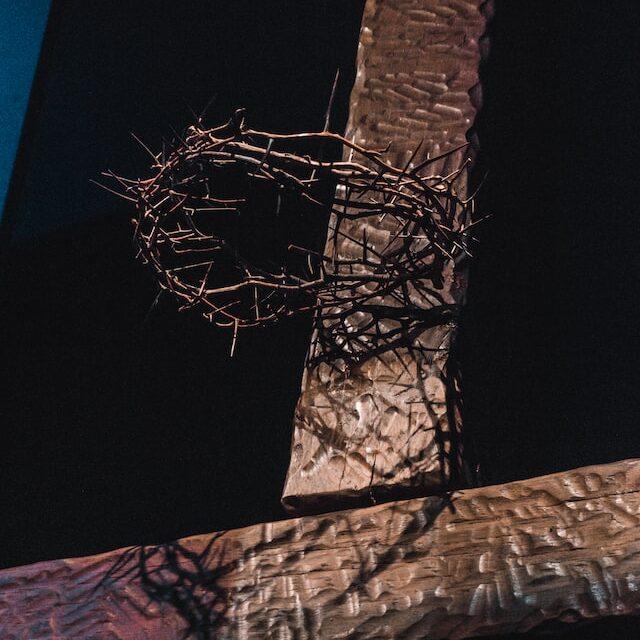
The Crown of Thorns is a symbol of the suffering that Jesus endured on the cross. It is said to have been made from thorns found in the Garden of Gethsemane and placed on Jesus’ head during his crucifixion.
The Crown of Thorns reminds us of the price that Jesus paid for our salvation.
The Crown of Thorns is also an important relic in the Christian faith, with several purported pieces of the crown held in churches around the world.
One of the most famous of these is the Crown of Thorns housed at Notre Dame Cathedral in Paris, which is believed to be the actual crown worn by Jesus during his crucifixion.
This relic has become a powerful symbol of devotion and inspiration for Christians, who often make pilgrimages to see it and pray before it.
4. Palm Branches

Palm Sunday marks the beginning of Holy Week, commemorating Jesus’ entry into Jerusalem before his crucifixion. The crowds welcomed him by waving palm branches, which were a symbol of victory and triumph.
Today, palm branches are still used in many churches on Palm Sunday as a reminder of Jesus’ triumphal entry.
In addition to their use on Palm Sunday, palm branches have also been used as a symbol of martyrdom and sacrifice in the Christian faith.
In some parts of the world, Christians would carry palm branches with them as they take part in processions or attend church services during Holy Week.
The practice is especially common in regions where Christians face persecution or hardship, as a way of showing solidarity with Jesus and the early Christians who suffered for their faith.
5. Cross

The cross is the most recognizable symbol of Christianity and is a powerful reminder of Jesus’ sacrifice. During Lent, many Christians wear a cross as a symbol of their faith and a reminder of the sacrifice Jesus made for them.
The symbol of the cross has a rich history in the Christian faith, and it is believed to have been used as a symbol of faith as early as the second century.
It was not until the fourth century, however, that the cross became the predominant symbol of Christianity. Today, crosses come in various shapes and sizes, from ornate gold crosses to simple wooden crosses.
6. Crowned Heart
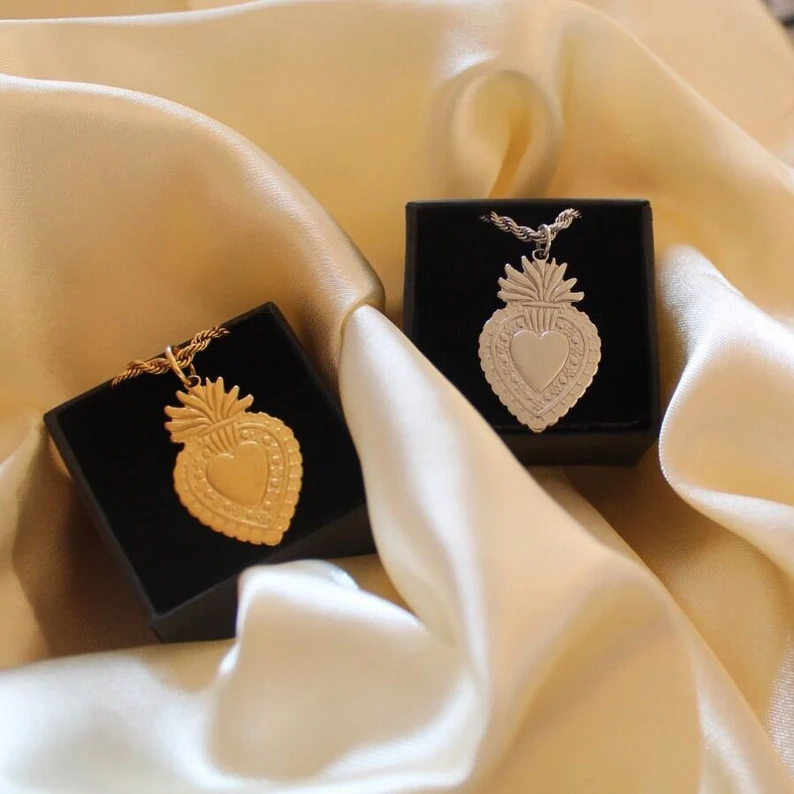
The crowned heart is a symbol of devotion and love for Jesus. The crown represents his royalty, and the heart stands for his love for the people. This symbol is often used in artwork and jewelry during Lent as a reminder of the depth of Jesus’ love.
The crowned heart symbol has been used for centuries in Christian art and jewelry. It was first popularized in the 17th century by the French Carmelite nun, Saint Margaret Mary Alacoque, who claimed to have visions of Jesus showing her his heart surrounded by thorns and crowned with thorns.
This vision inspired the devotion to the Sacred Heart of Jesus, which remains popular to this day.
Many Christians wear jewelry featuring the crowned heart symbol during Lent to show their devotion and keep the message of God’s love close to their hearts.
7. Candles

Candles are often used in Lenten services and have a long history in Christianity. They were first used by the early church as a source of light during worship services, and later became a symbol of Jesus as the light of the world.
In the context of Lent, candles are often used in special services such as Tenebrae, which is a service of darkness that commemorates the suffering and death of Jesus. During this service, candles are gradually extinguished until the sanctuary is left in darkness, symbolizing the darkness that fell over the land when Jesus died on the cross.
The final candle, known as the Christ candle, is left burning to symbolize the hope of the resurrection.
8. Wine and Bread
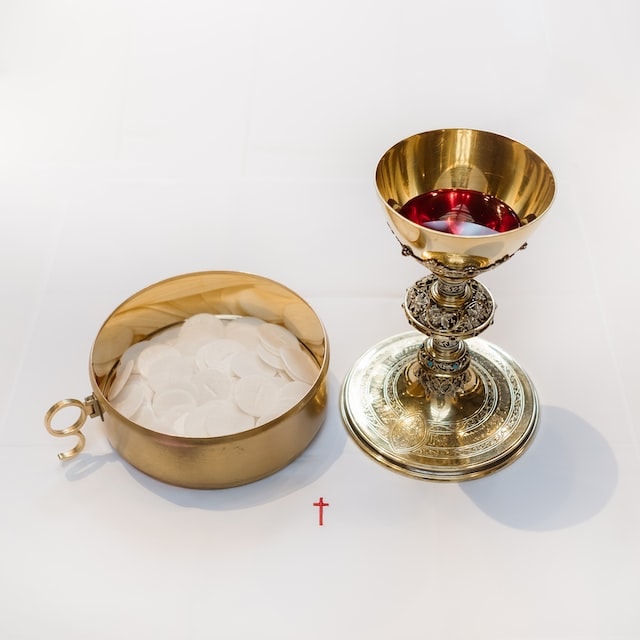
Wine and bread are important symbols of Lent, particularly during Holy Week. Within the Christian tradition, bread and wine represent the body and blood of Jesus Christ and are consumed during the sacrament of Communion or the Eucharist.
During Lent, many churches will hold special services, focusing on the sacrifice Jesus made for humanity through his death and resurrection.
The sacrament of Communion is often a central part of these services, and the bread and wine serve as a powerful reminder of Jesus’ sacrifice and the salvation he brings.
Additionally, abstaining from bread and wine during Lent can be a form of sacrifice and penance, helping to focus the mind on spiritual matters and drawing individuals closer to God.
Wrapping Up
As the season of Lent approaches, it’s worth taking a moment to appreciate the deep symbolism that makes it such a meaningful time of year for Christians around the world.
Whether you’re a devout Christian or just curious about the symbolism of Lent, these symbols can deepen your appreciation for the season and all that it represents.
Similar Articles:
15 Bible Symbols and Their Meanings
10 Popular Christian Symbols – History, Meaning and Importance




